Partnership for Active Transportation
Photo by Adam Coppola Photography
An Active Transportation Agenda
About | Publications | Why | Benefits | Making the Case | Leadership
Our purpose is to build a diverse and influential movement to create healthy places for healthy people by supporting “active transportation” policies and practices.
“Active transportation” is a means of getting around that is powered by human energy, primarily walking and bicycling. Often called “non-motorized transportation,” we prefer the term “active transportation” since it is a more positive statement that expresses the key connection between healthy, active living and our transportation choices.
About the Partnership
OUR PURPOSE:
To build a diverse and influential movement to create healthy places for healthy people by supporting “active transportation” policies and practices.
The Partnership for Active Transportation is a unique collaboration of organizations working at the intersection of transportation, public health and community vitality to promote greater investment in creating safe trail, walking and bicycling networks for all, and facilitating greater physical activity through active transportation.
Why Active Transportation
Active Transportation Is Building Healthier Places For Healthier People
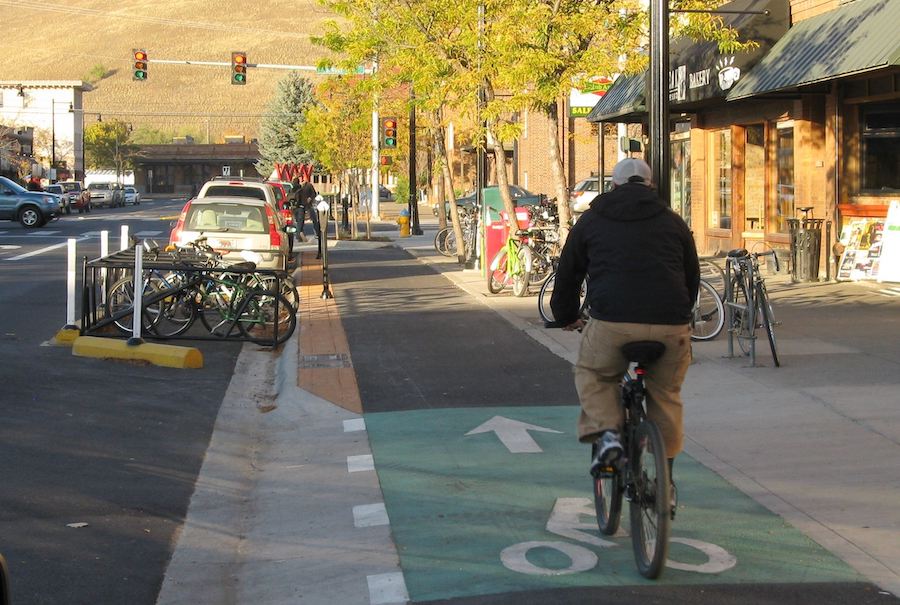
Making walking and bicycling, or active transportation, safe and convenient meets a critical need of American communities that benefits everyone. Active transportation is uniquely positioned to cost-effectively address multiple societal challenges. Communities that prioritize active transportation tend to be healthier by enabling residents to be more physically active in their daily routines and by having cleaner air to breathe. Active transportation systems also foster economic health by creating dynamic, connected communities with a high quality of life that catalyzes small business development, increases property values, sparks tourism and encourages corporate investment that attracts a talented, highly educated workforce.
Families are better able to manage the costs of driving. Motorists benefit from less road congestion. Active transportation works for all kinds of communities, from small rural towns to urban centers. With the creation of walking and bicycling networks linking home, work, school, shopping, transit and recreation destinations at a fraction of the cost of comparable roads, these gains will grow rapidly.
What is Active Transportation?
“Active transportation” is a means of getting around that is powered by human energy, primarily walking and bicycling. Often called “non-motorized transportation,” we prefer the term “active transportation” since it is a more positive statement that expresses the key connection between healthy, active living and our transportation choices.
What Are Active Transportation Networks?
Just as our existing motorized transportation networks connect destinations via an interconnected system of roadways that enable people to get from A to B, active transportation networks allow people to do the same thing by walking and bicycling. Imagine a system of trails, quiet neighborhood streets, bike lanes and cycle tracks that connect your home with your work, school, shopping, entertainment and other destinations. You could enjoy the freedom of safely and conveniently getting where you’re going without being forced to drive a car.
Benefits of Active Transportation
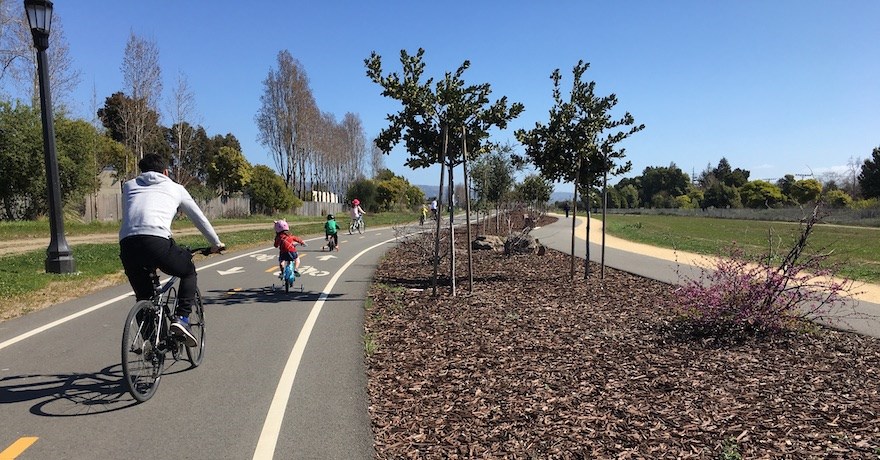
Active transportation offers the promise of improving the health of our people and the places they live.
- Healthy People: America faces an obesity crisis, with more than two-thirds of American adults either overweight or obese. By making walking and biking safe and convenient, we can make it much easier for people to build routine physical activity into their daily lives.
- Healthy Environment: Enabling people to walk or bike for some of their short trips can go a long way in helping our communities efficiently address numerous environmental challenges, from air pollution to climate change.
- Healthy Economy: Active transportation systems also foster economic health by creating dynamic, connected communities with a high quality of life that catalyzes small business development, increases property values, sparks tourism and encourages corporate investment that attracts a talented, highly educated workforce. Active transportation also offers economic benefits to families by providing transportation options that don’t require consuming gasoline at $4 per gallon.
- Mobility for all: Near-universal reliance on the automobile for transportation leaves many people out of the equation, stuck with no way to get around. Children, the elderly, the visually impaired or otherwise physically challenged, those with lower incomes, or those who simply choose to not have access to a car, are among the groups that benefit most when opportunities to safely walk or bicycle are improved.
Is Active Transportation Essential, or Just Nice To Have?
What does it take for something to be considered an “essential” part of what defines a community? Nearly all agree that basic infrastructure like roads, water, sewer systems and schools are integral pieces of the puzzle. Most would also cite community assets like libraries and parks as essential to vibrant communities. One goal of the Partnership for Active Transportation is to bring about a shift in perception in which trails and other safe places for people to walk and bike are more universally understood to be necessary for a successful 21st century community.
Communities certainly can exist without active transportation networks, but they do not function as well. Such communities lack access to free, healthy outdoor activities that save money, provide mobility choices, free up road space, reduce pollution and promote economic vitality.
In other words, for communities to thrive, trails and other safe walking and bicycling opportunities are absolutely essential.
The Federal Government and Active Transportation
With the recent passage of the federal transportation reauthorization bill (the “FAST Act”), active transportation saw a marginal increase in funding—a victory in a contentious political climate, but at a level insufficient to meet growing demand.
The recent Congressional debate spawned new champions for active transportation, but also revealed that unfortunately there are still decision-makers who do not accept that such investment is not only cost-effective, it is essential.
Federal investment in active transportation helps the government to contain ever-rising mobility and health care costs. Investing in active transportation improves the efficiency of the roadway system for everyone, including motorized users. By enabling Americans to walk or bike instead of drive for short trips, the federal government avoids underwriting more expensive strategies for reducing congestion, managing road wear, or serving the mobility needs of those who cannot drive.
For 60 years, federal transportation policies, as implemented by state agencies focused on road expansion, have tended to make it much harder for people to walk or bicycle. Strategic investments in active transportation help to restore a sense of balance; providing choices regarding how to get around. Therefore, we see an essential federal interest and role in investing in active transportation systems that expand the transportation choices available to the American people.
What Is The Current Federal Role?
In June 2012, the U.S. Congress passed a federal transportation bill, “Moving Ahead for Progress in the 21st Century” (MAP-21) that reduced dedicated federal funding for active transportation by at least 30 percent, consolidated three core programs that support active transportation into a single Transportation Alternatives program, and changed the rules to grant states more control over whether and how to fund active transportation.
Congress passed a new federal bill to replace MAP-21 in December 2015, the “Fixing America’s Surface Transportation Act” (FAST Act; see RTC’s analysis of the bill). The bill provides for a modest increase in funding, but also a new source of vulnerability to transfer away funds at the metropolitan level. Changes to a low-interest loan program will provide a new tool to finance active transportation networks.
Between 1991 and 2012, the federal Transportation Enhancements (TE) program was our nation’s top funding source for trails, walking and bicycling. TE’s vital resources have enabled communities throughout the nation to build locally prioritized trail, walking and bicycling projects. In 2012, TE, Safe Routes to School, and the Recreational Trails Program were consolidated as the Transportation Alternatives Program (TAP). The FAST Act further makes a cosmetic structural change by moving TAP under a broad highway program as a set-aside.
The Nonmotorized Transportation Pilot Program passed as part of the 2005 federal transportation bill SAFETEA-LU, moved beyond the project approach of Transportation Enhancements to advance active transportation networks. The program funded four communities around the country at $25 million each over four years to complete interconnected systems by which people can walk and bike to get where they’re going.
The Transportation Infrastructure Financing and Innovation Act (TIFIA) Program is a federal low-interest loan program intended to encourage public-private partnerships and spur transportation investment. Provisions added in the FAST Act will make TIFIA more accessible to communities seeking to build connected active transportation networks. Members of the Partnership will be working closely with USDOT (United States Department of Transportation) to ensure timely guidance, and will be assisting communities in taking full advantage of the new provisions.
The 2010 Affordable Care Act (ACA) included the Prevention and Public Health Investment Fund (the Fund). The Fund is the nation’s first mandatory funding stream dedicated to public health prevention. From 2011 to 2014, a portion of the Fund was dedicated to Community Transformation Grants (CTG). CTGs supported long-term prevention, such as infrastructure that creates or enhances access to active transportation in conjunction with public-awareness campaigns. Although Congress discontinued the CTG program, we hope to see future health-focused prevention programs that provide for active transportation and encourage active living.
The federal Transportation Investments Generating Economic Recovery (TIGER) grant program has funded large-scale transportation projects that have an outsized impact on a regional scale. Several funded projects have addressed, either as an element of a larger proposal or as the primary focus, active transportation as a means of improving regional access and livability.
As the FAST Act and ACA are implemented, the Partnership for Active Transportation will monitor how these funds are being spent and how we can best ensure that active transportation projects and systems are prioritized.
Making The Case
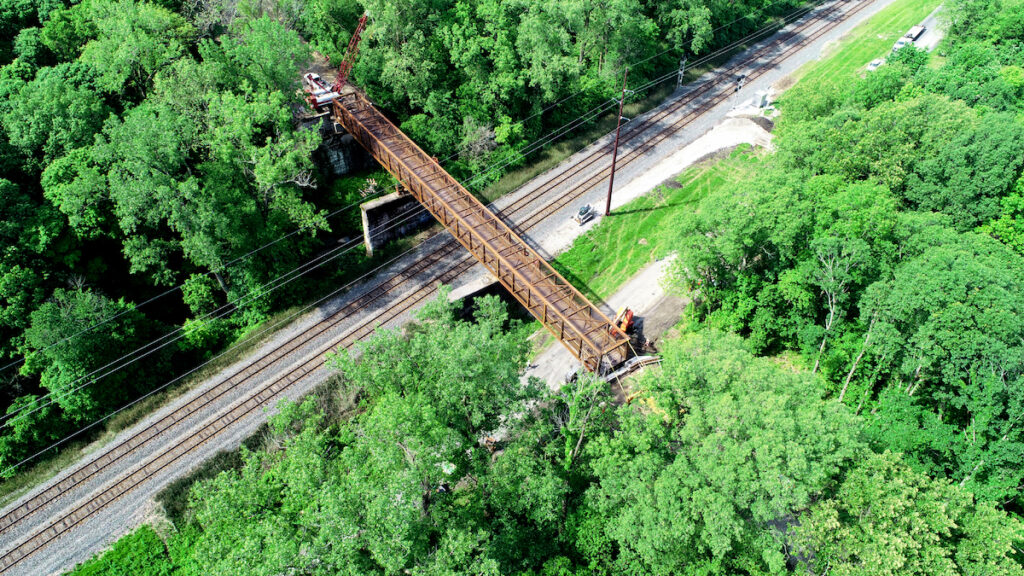
By designing our communities to prioritize the rapid movement of automobiles, we have created places where it is difficult—even dangerous—for people to walk or bicycle. Creating a more balanced transportation system through cost-effective investments in active transportation systems can simultaneously result in healthier places and healthier people.
In 1956, President Eisenhower launched the largest public works program in American history: the creation of the interstate highway system. While this program has contributed greatly to America’s prosperity, it has also produced unintended consequences.
As a result of a singular focus on automobiles, we have created a transportation “monoculture,” with driving often the only safe and convenient way to get from Point A to Point B. And as walking and biking have become more marginalized and difficult, driving has become second nature, so embedded in our culture and our behavior that we do it without thinking.
Half of the trips Americans take are within range of a 20-minute bike ride, with more than one-fourth within range of a 20-minute walk. Yet the vast majority of even these short trips are taken by car. Unintended consequences of a one-dimensional transportation system that leaves us little choice but to drive include:
- Unhealthy places with a declining quality of life due to air pollution, the loss of green space and local businesses, and growing traffic congestion and safety hazards; and
- Unhealthy people who are walking and biking less—consuming more calories than they burn—and contributing to a growing obesity crisis that is placing a costly burden on our nation’s health care system.
It doesn’t have to be this way. Creating a more balanced transportation system through cost-effective investments in active transportation systems can simultaneously result in healthy places and healthy people.
The Case for Active Transportation: Healthy Places
Whether a place is a small town, urban or suburban, increased public investment in active transportation is an essential ingredient in creating an economically healthy, vibrant 21st century community.
In Post-World War II America, many people left compact city neighborhoods—which often came to be viewed as crowded and dirty—in pursuit of a new American Dream in freshly minted suburban communities. These new developments, spurred by new roads and cheap gasoline, offered affordable homes, quiet neighborhoods and ready access to green space.
But in the ensuing decades—with successive waves of outward development—this auto-dependent lifestyle has lost its luster for many. Quality of life in the outer rings of our metropolitan regions has suffered due to increases in air pollution, loss of green space, $4-per-gallon gasoline and hours wasted sitting in traffic.
As a result, we are now witnessing a dramatic change in consumer housing preferences that is reversing trends that began in the post-war era. The millennials, and their baby boomer parents, are flocking to more compact places where they can walk or bike to work, to shops and to entertainment.
In the wake of the 2008 housing bust, this change in consumer preference is rapidly redefining real estate markets in our metropolitan regions. Demand for housing in walkable, bikeable neighborhoods with a high quality of life is outstripping supply, causing real estate values to rise in places that offer such amenities, while remaining stagnant in those that don’t. These changing preferences are also reflected in efforts to retrofit traditional suburban places to include “town centers” that are more pedestrian and bicycle friendly.
These recent changes in real estate markets also have major implications for labor markets, and we are in the midst of a seismic shift in societal preferences regarding the nature of where we live. A community seeking new corporate investment to create jobs enjoys a major competitive advantage if it can demonstrate that it is a “talent magnet” that can attract a highly educated workforce seeking to live in a place that offers the opportunity for a healthy, active lifestyle.
The Case for Active Transportation: Healthy People
Two-thirds of American adults, and nearly one-third of children, are now considered overweight or obese, with obesity-related health care costs now estimated at $160 billion per year. Investments in active transportation networks will help to combat the obesity epidemic by making it easier to build routine physical activity into our daily lives.
The building of the interstate highway system between 1956 and 1991 contributed to a steady decline in walking and biking as our communities were designed around the automobile. The resulting lack of transportation choices continues to contribute to troubling levels of physical inactivity that are a key factor in the rise of many chronic diseases and America’s obesity epidemic.
In response to this crisis, the U.S. Surgeon General has recommended that American adults get at least 150 minutes of moderate physical activity per week.
But that’s easier said than done. It has become an unfortunate cliché that increasingly people have to drive to a gym to ride a stationary bicycle because they can’t walk or bike in their own neighborhood.
We can solve this.
Through cost-effective investments, we can build out the neglected part of our transportation networks by creating “active transportation systems” that connect homes, workplaces, schools, shops and recreation. For pennies on the dollar, we can create seamless networks of trails, sidewalks and cycle tracks that can give all Americans the choice of mobility without driving, especially when connected to public transportation.
In short, we can tackle the obesity epidemic by creating safe routes to everywhere. We can give people the opportunity to meet the Surgeon General’s recommendation by making it much easier to build routine physical activity into our daily lives. Where these investments have been made, they have shifted at least a small percentage of short trips from cars to walking and biking, paying for themselves many times over in reduced travel, greater well-being, and increased economic activity.
Leadership Council
The Leadership Council is a core group of national organizations dedicated to fostering healthy places for healthy people by building a broad-based movement at the local, state and national levels to support active transportation in all relevant policies.
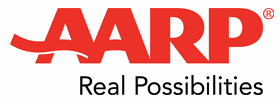
AARP is a nonprofit, nonpartisan organization, with a membership of more than 37 million, that helps people turn their goals and dreams into real possibilities, strengthens communities and fights for issues that matter most to families such as health care, employment and income security, retirement planning, afforable utilities and protection from financial abuse. We advocate for individuals in the marketplace by selecting products and services of high quality and value to carry the AARP name as well as help our members obtain discounts on a wide range of products, travel and services. A trusted source for lifestyle tips, news, and educational information, AARP produces AARP The Magazine, the world’s largest circulation magazine; AARP Bulletin; www.AARP.org; AARP TV & Radio; AARP Books; and AARP en Espanol, a Spanish-language website addressing the interests and needs of Hispanics. AARP does not endorse candidates for public office or make contributions to political campaigns or candidates. AARP Foundation is an affilited charity of AARP that is working to win back opportunity for struggling Americans 50+ by being a force for change on the most serious issues they face today: housing, hunger, income, and isolation. AARP has staffed offices in 50 states, the District of Columbia, Puerto Rico and the U. S. Virgin Islands.
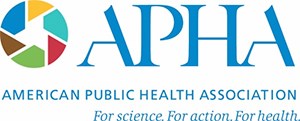
The American Public Health Association (APHA) is the oldest and most diverse organization of public health professionals in the world and has been working to improve public health since 1872. The Association aims to protect all Americans, their families and their communities from preventable, serious health threats and strives to assure community-based health promotion and disease prevention activities and preventive health services are universally accessible in the United States. APHA recognizes that effective transportation and land-use strategies can not only improve the health and well-being of Americans but also decrease demand on an already overextended health care system. APHA champions primary prevention by promoting the scientific foundation of public health policy and evidence-based practices to increase opportunities for active transportation.
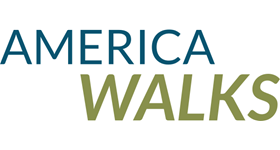
America Walks (AW) is a national nonprofit organization that works collaboratively to make America a great place to walk. We foster walkable communities by engaging, educating and connecting diverse stakeholders to advance policies and implement effective community campaigns. Our vision is by 2020, walking in everyday life is embraced across America. Streets and neighborhoods are safe and attractive public places that encourage people of all ages, abilities, ethnicities and incomes to walk for transportation, exercise and recreation. Walkable community policies promote health, economic vitality, environmental sustainability and social equity.

LOCUS is the national coalition of real estate developers and investors who advocate for sustainable, equitable, walkable development in America’s metropolitan areas. Around the country, real estate developers and investors recognize pent-up demand for and a market shift toward sustainable, walkable urban places. Homebuyers and businesses increasingly want smart growth development and LOCUS members understand these trends. Despite this market momentum, many local, state and federal policies currently in place hamper efforts to create the development our consumers want and which support strong local economies. LOCUS serves as a vital real estate development voice that guides public policy towards market driven trends that are more economically, socially and environmentally sustainable for America’s future. As real estate developers and investors, LOCUS members bring hands-on experience and expertise on how America can create more jobs, increase property values and provide sustainable economic growth.

Project for Public Spaces (PPS) is a nonprofit organization dedicated to helping people create and sustain public spaces that build strong communities. We are the central hub of the global placemaking movement, connecting people to ideas, resources, expertise, and partners who see place as the key to addressing our greatest challenges. Our pioneering placemaking approach helps citizens transform their public spaces into vital places that highlight local assets, spur rejuvenation, and serve common needs.

Trust for America’s Health (TFAH) is a non-profit, non-partisan organization that promotes optimal health for every person and community and makes the prevention of illness and injury a national priority. TFAH works with traditional and new partners on high impact health issues, reporting on and recommending evidence-based programs and policies that make prevention and health equity foundational to health and community systems at all levels of society.
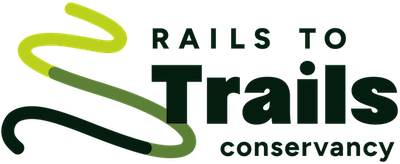
Since 1986, Rails to Trails Conservancy has worked to bring the power of trails to more communities across the country, serving as the national voice for the rail-trail movement. With more than 1 million grassroots supporters, 24,000+ miles of rail-trails on the ground nationwide and more than 8,000 miles of rail-trails ready to be built, our focus is on linking these corridors—creating trail networks that connect people and places, bringing transformative benefits to communities all across the country. Our flagship initiatives—the Great American Rail-Trail®, TrailNation™ and TrailLink.com—bring that strategy to life, connecting millions of people by trail.
Advisory Committee
The Advisory Committee of the Partnership for Active Transportation is a team of experts who support greater investment in active transportation networks and provide assistance to the Partnership on an as needed basis as appropriate to the individual.
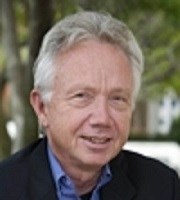
Richard J Jackson, MD
FIELDING SCHOOL OF PUBLIC HEALTH, UNIVERSITY OF CALIFORNIA, LOS ANGELES
Richard Joseph Jackson is Professor and Chair of Environmental Health Sciences at the Fielding School of Public Health at the University of California, Los Angeles. Dick Jackson lectures and speaks on many issues, particularly those related to built environment and health. He co-authored two Island Press Books: Urban Sprawl and Public Health in 2004 and Making Healthy Places in 2011. He is host of a 2012 public television series Designing Healthy Communities which links to the J Wiley & Sons book by the same name published in October, 2011.
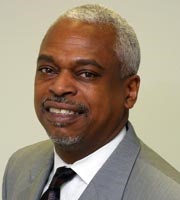
Wade Henderson
LEADERSHIP CONFERENCE ON CIVIL AND HUMAN RIGHTS AND LEADERSHIP CONFERENCE EDUCATION FUND
“The Partnership for Active Transportation seeks to provide enhanced access for all people. The Leadership Conference on Civil and Human Rights is proud to lead a caucus of transportation professionals seeking greater equity. We join with the Partnership in their efforts to develop great communities that are accessible to everyone by healthy, safe active transportation.”

Ted Eytan, MD
KAISER PERMANENTE CENTER FOR TOTAL HEALTH
“Kaiser Permanente, the nation’s largest non-profit integrated health system, is part of the Partnership for Active Transportation because of the health and other benefits of integrating physical activity into our daily lives. Assuring access to safe walkable/bikeable routes and destinations is essential to promoting total health among our members, communities, and our society.”
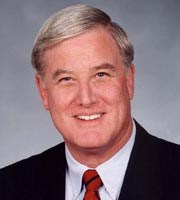
Greg Cox
SUPERVISOR, SAN DIEGO COUNTY, CALIFORNIA
“San Diego County is routinely cited as one of the best places to walk and bike. We didn’t do it alone. We used private, local government, county, state and federal funds as part of our community-wide efforts for better walking and biking. Please help me and the Partnership for Active Transportation secure more investment in safe, healthy active transportation.”
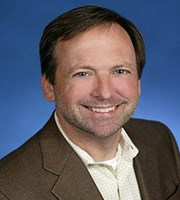
Marc Berejka
REI, INC.
“REI is pleased to play a significant role in the outdoor recreation economy – a sector that directly supports over 6 million jobs across the U.S. For the outdoor sector to thrive, and for the sake of our customers, we encourage the development and use of trails for transportation and recreation. So, we are happy to support the Partnership for Active Transportation in its efforts to create more outdoor places where people can be healthy and active.”

Lee Fisher
CEOS FOR CITIES
Lee Fisher is the President and CEO of CEOs for Cities, as well as a Senior Fellow with the Center for Economic Development at Cleveland State University’s Levin College of Urban Affairs. CEOs for Cities is a learning community and partnership network that connects urban leaders to each other and to smart ideas and practices for making cities more vibrant, sustainable, and economically successful. In 2013 CEOs for Cities published the Green Dividend™ Report which explores the growing market demand for urban living and for the kinds of cities and neighborhoods that enable households to utilize alternative modes of transportation—walking, cycling and transit—and to earn the Green Dividend™.
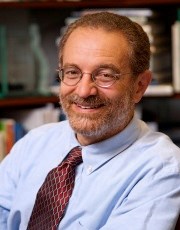
Howard Frumkin
SCHOOL OF PUBLIC HEALTH, UNIVERSITY OF WASHINGTON
Howard Frumkin is Dean and Professor of Environmental and Occupational Health Sciences at the School of Public Health at the University of Washington. His work focuses on public health aspects of the built environment, climate change, energy policy and environmental health policy. He is the author or co-author of over 200 scientific journal articles and chapters, and his books include Urban Sprawl and Public Health (2004), Environmental Health: From Global to Local (2005 and 2010), Green Healthcare Institutions: Health, Environment, Economics (2007), and Making Healthy Places: Designing and Building for Health, Well-Being, and Sustainability (2011).
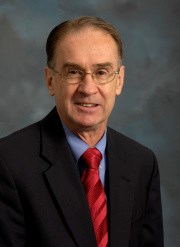
Russell Pate, Ph.D.
ARNOLD SCHOOL OF PUBLIC HEALTH, UNIVERSITY OF SOUTH CAROLINA
Russell Pate is a professor in the Arnold School of Public Health at the University of South Carolina, and he serves as Chair of the Board of Directors of the National Physical Activity Plan Alliance. His research is focused on physical activity and its promotion in children and youth. He is a former President of the American College of Sports Medicine, and he has served on the U.S. Department of Health and Human Services’ Physical Activity Guidelines Advisory Committee as well as on a series of Institute of Medicine panels addressing prevention of childhood obesity. He sees promotion of active transport as one of the essential strategies in the overall effort to increase the physical activity levels of Americans.